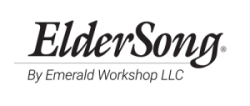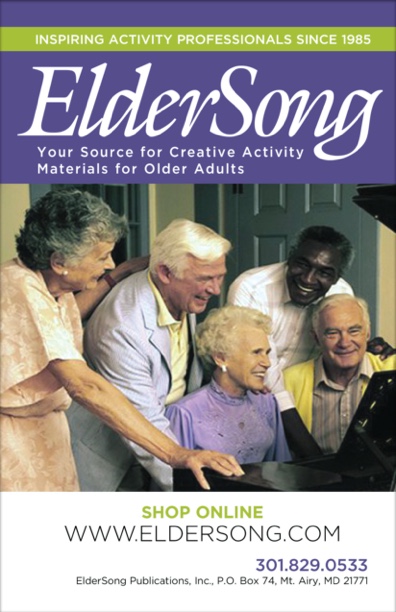Warm weather and the sound of a distant train whistle will often evoke memories of America’s past. Train travel was the nation’s preferred means of transportation in the early 20th century. As teens and young adults in the 1930s and 1940s, many older adults were impacted by the days of railroading. Ask your group: How did the train change our nation? How did rail travel affect your community? Did you ever take a short or long trip on one of America’s great passenger trains? Encourage participants to share “streamliner” stories from the golden age of rail travel. Your group will enjoy reminiscing about the heyday of railroading/passenger trains. Here are some activities to get you started.
- Display antique train memorabilia such as old train route maps, railroad signs, train tickets, train uniforms, conductor hats, dining car menus, wooden train whistles, and more.
- Encourage recollections about “riding the rails” during the Great Depression. What was life like for the many teenage hobos who hopped the freight trains looking for work?
- Show pictures of the famous streamliner trains of the 1930s, including the Burlington Zephyr and the Union Pacific M-10000. Ask your participants if anyone attended the 1933-1934 Chicago World’s Fair. The trains were featured in the Century of Progress Exposition. Perhaps a participant toured the Zephyr as it traveled to cities across the Midwest in the summer of 1934.
- Examine old train ads, posters, and calendars. Examples: Chessie the Cat railroad advertisements from the 1930s -1940s or the Great Northern Railway’s ad for a post-war vacation. Invite a hobbyist to talk about Lionel toy trains from the 1940s and 1950s or models from the American Flyer Manufacturing Company. Ask participants if Lionel trains were a part of their Christmas tradition.
- Rail fans will enjoy watching the 1934 movie The Silver Streak, which featured the Zephyr.
- Enlighten your group with Cecil B. DeMille’s 1939 movie Union Pacific, about building the transcontinental railroad.
- Talk about the impact of Franklin Roosevelt’s New Deal on the railroad industry.
- Encourage your group to share recollections of train travel during World War II. Train travel gained popularity in the early 1940s due to the shortage of gas and rubber. Trains were also important to the war effort, transporting soldiers and equipment.
- Show historic photographs of FDR’s funeral train procession from Warm Springs, Georgia to Washington, D.C. in 1945. Ask if any in your group witnessed the event.
- Sing or listen to old railroad/train songs of the early 1900s. Enjoy Johnny Cash’s version of “Wabash Cannonball” and “Orange Blossom Special” or Arlo Guthrie’s rendition of “City of New Orleans.”
- Share memories of the 1947 American Heritage Foundation’s Freedom Train, which traveled through 48 states with an exhibit of historical documents. Listen to a recording of Irving Berlin’s song “The Freedom Train,” sung by Bing Crosby and the Andrews Sisters. Ask participants about the 1976 American Freedom Train that carried artifacts from the 200-year history of our nation.
- Listen to audio recordings of Harry Truman’s 1948 presidential campaign, a whistlestop tour in which he gave speeches from the rear platform of a train.
- Chat about past and present railroad employment, including engineers, conductors, porters, crew members, brake operators, track workers, and more. Ask your participants if they had a family member who worked on the railroad – with the Pullman Company, for example.
- Many Americans have a love affair with train travel. Compare train travel with other methods of transportation. Ask: What makes rail travel appealing? What are the benefits of traveling on a train? Which method of transportation do you prefer for cross-country trips?
- Old train stations and depots dot the American landscape. Show posters of New York City’s Grand Central Station and talk about the custom of rolling out the red carpet for celebrities and politicians who rode the famed Twentieth Century Limited. Reminisce about other popular trains of the 20th century, including the Super Chief and City of New Orleans.
AMTRAK TOUR QUIZ
Amtrak took over passenger rail service in the early 1970s. Today, Amtrak passenger trains serve major cities across the United States. It’s time to book your trip! Your group is about to board an Amtrak passenger train to a destination in the U.S. Name the landmark or tourist attraction and ask members what city they will be visiting.
- Liberty Bell – Philadelphia
- Sears Tower – Chicago
- Disney World and Epcot Center – Orlando
- The Smithsonian Institution museums – Washington, D.C.
- The Martin Luther King Center – Atlanta
- Hollywood – Los Angeles
- Ellis Island – New York City
- Bunker Hill – Boston
- Space Needle – Seattle
- The Gateway Arch – St. Louis
QUOTE FOR THE MONTH
“No man ever listened himself out of a job.” ~ Calvin Coolidge
“TRAIN TRAVEL” written by Sue Hansen. © 2006 ElderSong Publications, Inc. All rights reserved.
Reprint Policy: To reprint or republish all or portions of this entry, you must acquire written permission and agree to link back to the original source. Please contact us at [email protected] to obtain permission.


